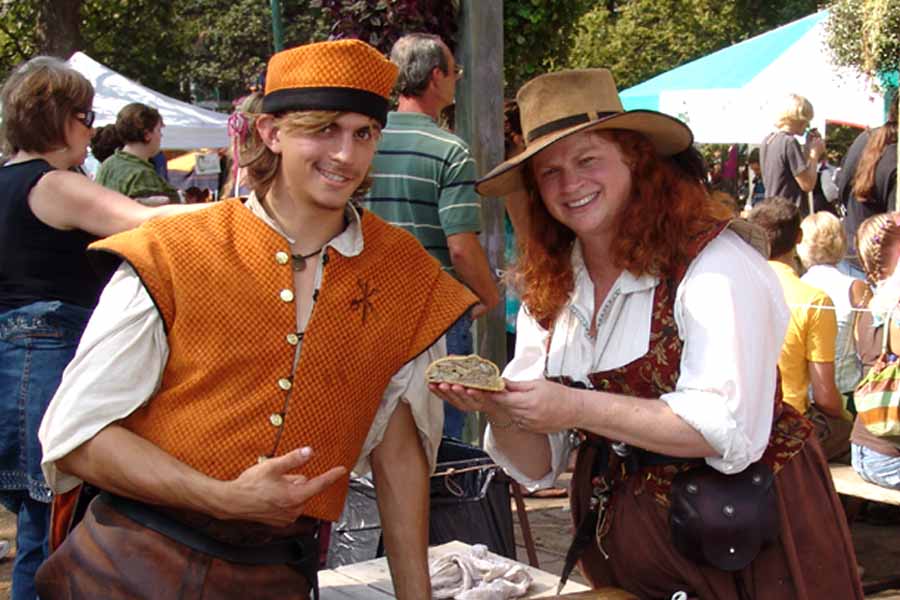This past season and year have been amazing. First, I became the official food writer for “Renaissance Magazine.”
Second, despite the weather, the appearance at Siouxland was well w orth it between the demonstrations and cookbook sales. The cold and rainy weather did not diminish our spirits!
orth it between the demonstrations and cookbook sales. The cold and rainy weather did not diminish our spirits!
Third, we experienced some amazing weather at the Minnesota Renaissance Festival. There was no rain until final weekend. The demos went well, fed an average of 100 people each day, amd sold more cookbooks. Also, the community kitchen in which we help feed the cast members, were nominated and received the “Best Group Award” in 2009 at the Minnesota Renaissance Festival. We were touched by everyone’s generosity and kindness; we couldn’t have done it without your help.
I almost forgot to add that I also won a $100 gift certificate for my website as part of a Passion and Quality campaign.
We plan on returning in 2010. Thank you all.
